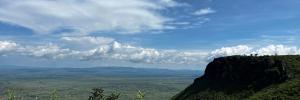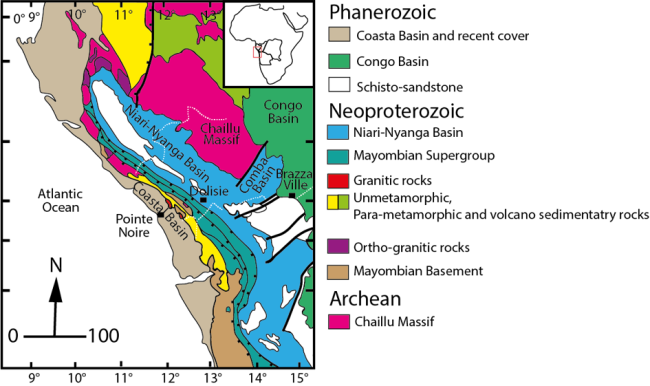
Sedimentary rocks of the West Congo Belt hold hidden ore resources for metals like copper, zinc, and vanadium.
Research grant will unlock critical mineral potential in Central Africa
- Africa is a premier frontier in the search for “green metals” but remains poorly studied.
- Research grant will allow the development of a comprehensive metallogenic framework for the West Congo Belt.
- Findings will have far-reaching implications for critical mineral exploration across Africa.
A major new research initiative will shed light on one of Africa’s least understood yet promising mineral provinces, the West Congo Belt (WCB), extending for more than 1400 km between Gabon and the north of Angola.
As global demand for “green metals” such as copper accelerates, driven by renewable energy technologies and battery storage, the search for new and sustainable mineral resources has become increasingly urgent.
Africa remains a premier frontier for exploration, yet many of its sedimentary basins, including the West Congo Belt (WCB), remain poorly studied – particularly when compared to the well-known Katanga Copperbelt, the world’s richest copper-cobalt province.
Through a partnership between UNESCO and the International Union of Geological Sciences (IUGS), a diverse intra-African team of geoscientists will investigate the geology and early stage geometallurgy of mineral deposits in the WCB. This is one of only three projects that were selected from 313 expressions of interest from 45 African countries.
According to Dr Yann Mpaka, co-principal investigator from the University of Kinshasa, their research will integrate field geology, geochemistry, and structural analysis to develop a comprehensive metallogenic framework for the West Congo Belt.
“By understanding how these deposits formed, we can better guide future exploration and help unlock the region’s potential in a way that benefits local economies and supports global sustainability goals,” he adds.
The project will investigate the processes of mineralization, structural evolution, and fluid–rock interactions that controlled the formation of copper, lead, zinc, iron, and vanadium deposits. By linking geological mapping with mineral chemistry and isotopic analyses, they will be able to refine the regional metallogenic model. Dr Mpaka explains.
Co-principal investigator, Prof Bjorn von der Heyden, says they are excited to see this project achieve its goals of enhancing the standard of local geoscience and geometallurgy, through south-south collaboration. He is also co-chair of the African Rainbow Minerals Chair in Geometallurgy at Stellenbosch University.
“The project will provide opportunity for skills transfer, and the broader outcomes will have implications for sustainable and inclusive growth driven by the minerals sector,” he adds.
“The findings are expected to have far-reaching implications for critical mineral exploration across Africa and will position the West Congo Belt as a key target in the global search for the next generation of green metal deposits,” they conclude.
Follow the project on Linkedin





